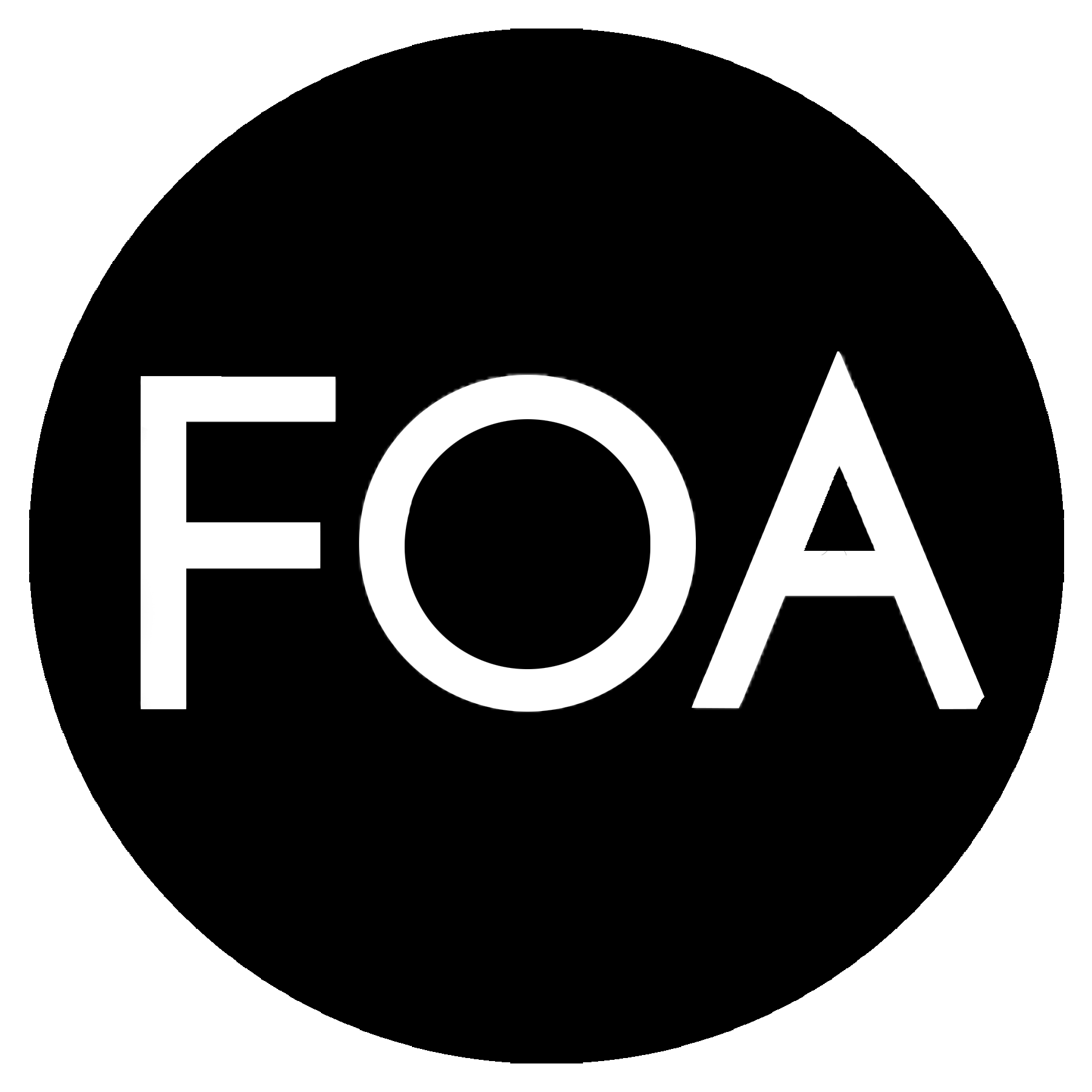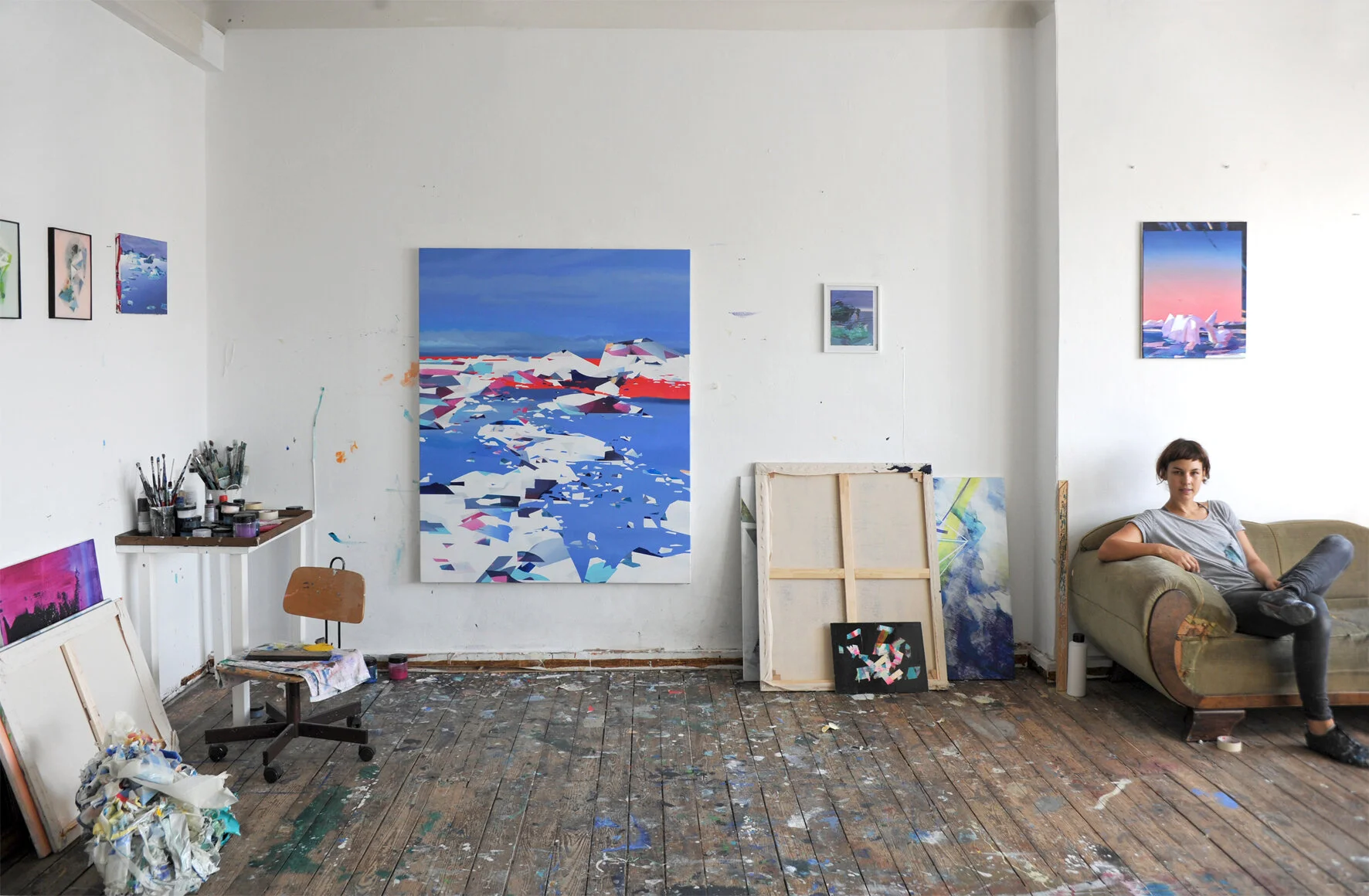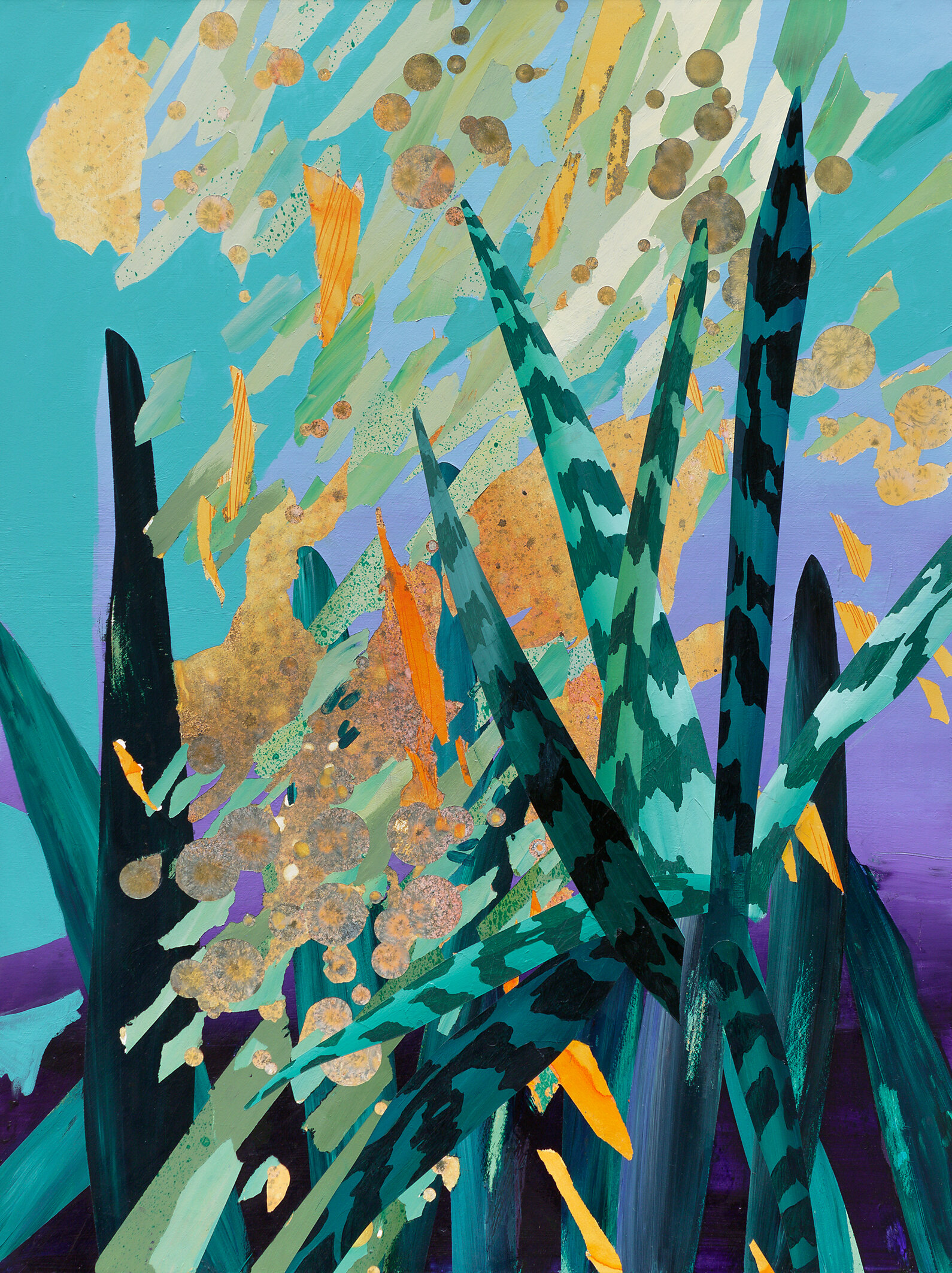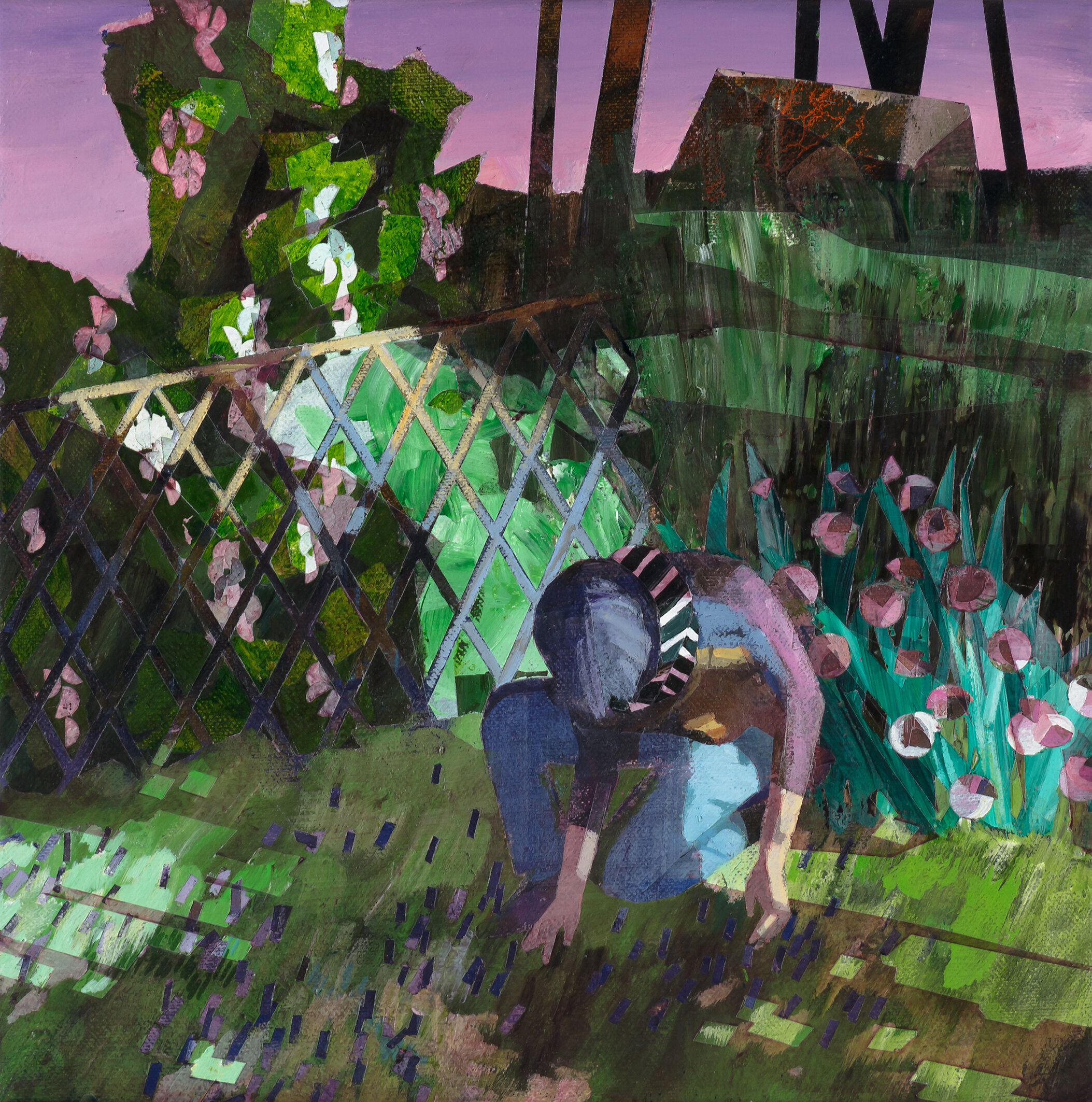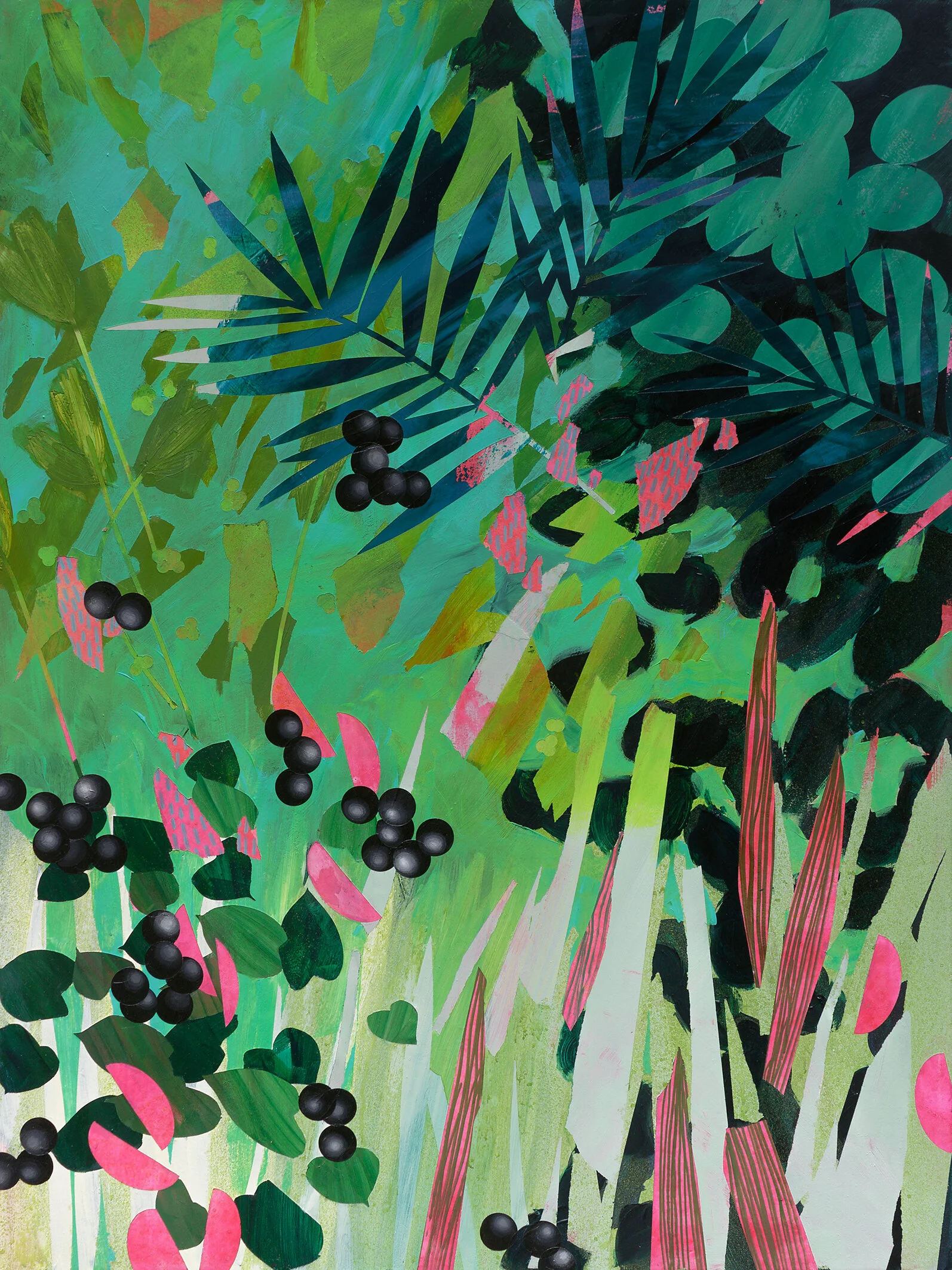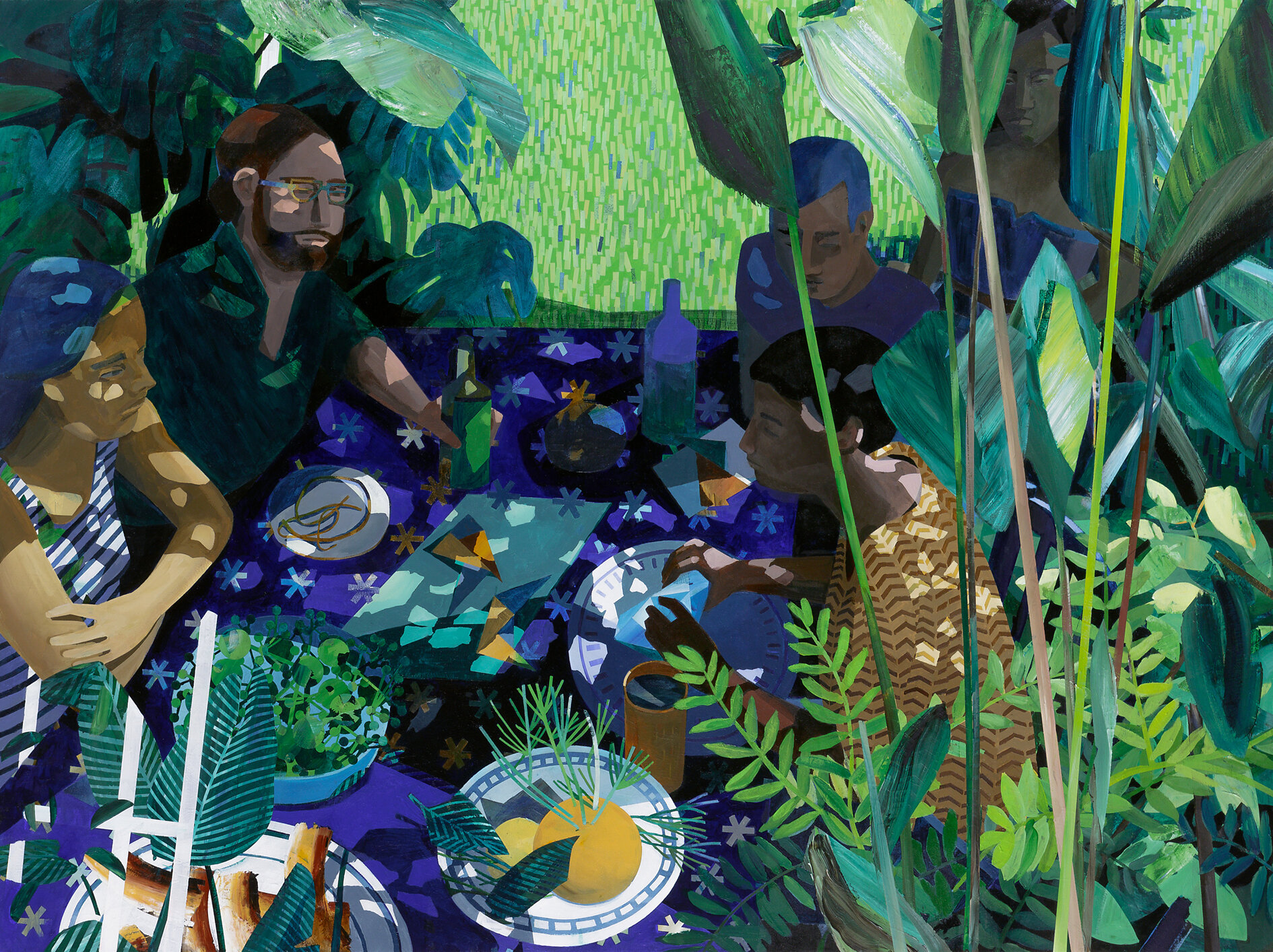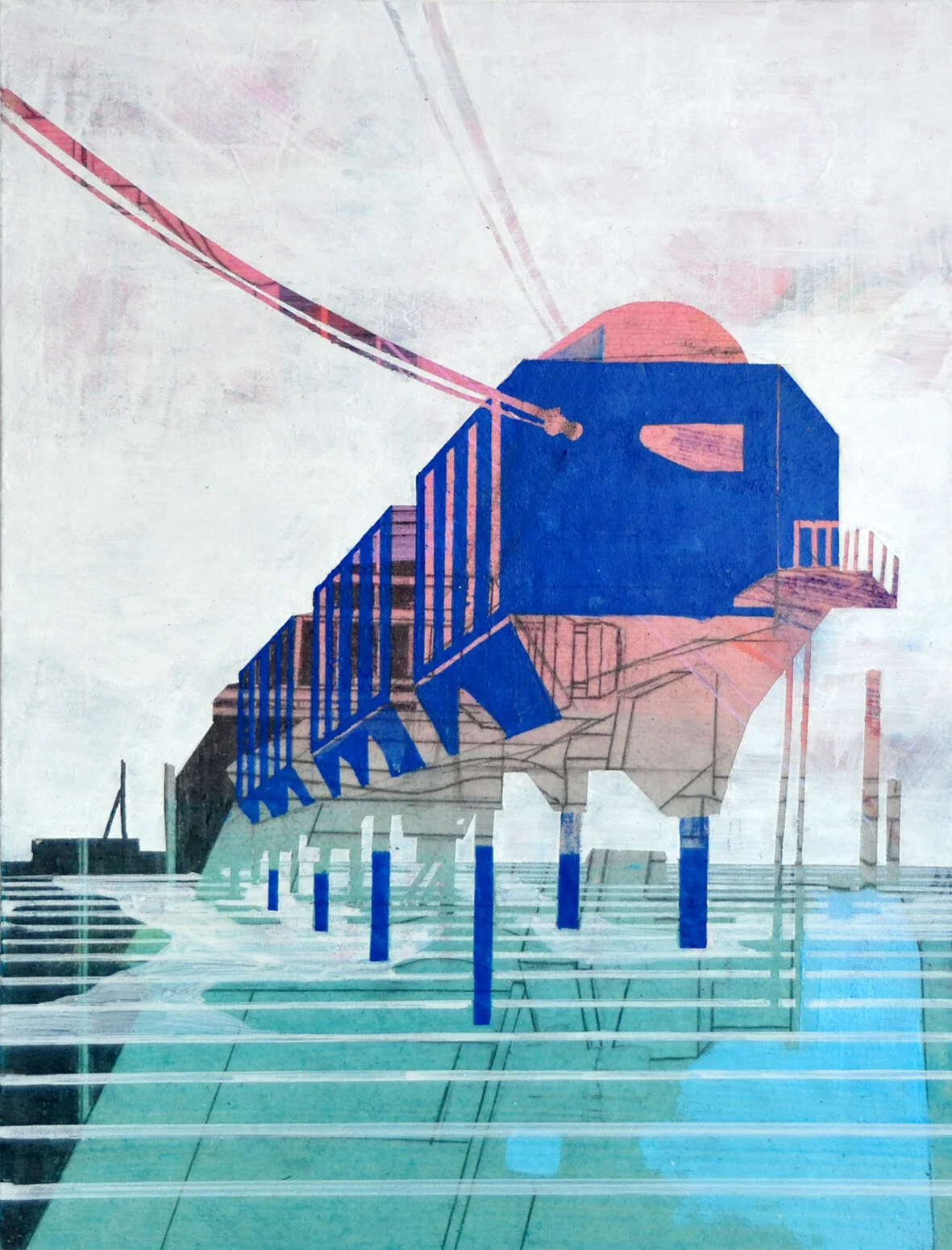Interview with Susanne Wurlitzer
Susanne Wurlitzer is a German-based artist who received her diploma and “Meisterschüler” from the University of Visual Arts, Leipzig, and was selected as the cover artist for Volume 10. She has had five solo shows and participated in many group exhibitions. In 2006 she received a short-term scholarship of DAAD for Kairo, Egypt and in 2008 for Murmansk, Russia from the Rosa Luxemburg Foundation. She is interviewed by Ty Bishop, Founder and Publisher of FOA
Ty: We’re very excited about featuring work from your Im Garden series on the cover. Can you tell me more about this body of work?
Susanne: Starting with the garden series, I'm concentrating on the figures, that are supposedly moving through the imaginary garden, which is embedded in the light and atmosphere of this setting.
Retrospectively, I can say that this series was a countermovement to my previous work. These works illustrated mostly landscapes, often with human interventions. The figure itself never came up. The atmosphere was often wide, solitary, icy - hybrid worlds, whose perspective can not be clearly determined.
In contrast, the Garden series has a warm and intimate sentiment. Still some works contain an ambivalence, leaving you with an unsettled feeling. While working on the more recent paintings, the figures disappear and make room for a more abstract interpretation. I tried to focus on the interplay of form, color, abstract and non abstract parts than on the atmosphere of the painting as seen in previous works. They switch between concreteness and abstraction and are no longer specific in the narrative.
Ty: Throughout your work, there’s a strong presence of nature. Where do you get the subject matter for your work?
Susanne: Nature consists of an enormous abundance of forms. I alter those forms that I see and they become parts of my paintings. Latest since the epoch of Romanticism, Nature has been used as an artistic expression or metaphor of an inner condition.
Many of my themes evolve from my interest in utopian and dystopian ideas of how we will live in the future. I have a strong interest in technical and social developments, challenges that will affect us as humans. I read a lot of science fiction literature. I'm less interested in aliens or spaceship content. I like literature, which is about possible social drafts. How will we live together, and what will our environment look like? Will the next generations see the Arctic as we do today? How will the architecture look like? Which relics and traces will remain of the human species after all?
Ty: What surprises me about your work is how vital drawing is…you spend a lot of time drawing! Why is this so important for your practice?
Susanne: Drawing has always been an integral part of my artistic practice. It's a way to capture something quickly. While drawing, new ideas arise to approach an existing topic from another side. Or point out an aspect that affects the paintings. I think I'm much more experimental and intuitive in my drawings. Maybe because the paintings take so much longer that I need to think much more about it. In any case, both give mutual impulses to each other for further development of my work.
Susanne Wurlitzer
Halley VI Station, 2019
Pencil, colored pencil, felt-tip pen, acrylic, on cardboard
25 x 19 cm
Ty: What is a day in your studio like?
Susanne: I have to admit, concerning my working day, I'm a creature of habit. So, I start nearly every day at 8:30 am in my studio. The solid structures help me to stay on the ball, even when it gets frustrating.
I do have a great studio community. We are about 10 artists on the floor, everybody has their own studio, and we do have a common room. There are set times for lunch and coffee, and everyone who is in the mood joins us. Sometimes other artists or friends come by as well.
As an artist, you spend a lot of time alone with yourself in the studio - you're on your own in every way. So it is strengthening to work in a supportive atmosphere with other artists.
Ty: You have two big shows coming up. Can you talk a little bit about them?
Susanne: The first show is in Nuremberg in September. A colleague, Oskar Rink and I worked on a project together. For that, I moved into her studio with my painting materials. In the beginning, we are "just" working in the same room, watching each others working process and talked a lot about it.
As a next step, we begin with what we call, "prescription pictures ". That means, one can put a sticky note next to the painting of the other, who is currently working on, with instructions on what to do next.
They are not too concrete, something like "no longer use tape" or "large abstract surface in black ", but you have to follow it. We already started this project in the last year, we wanted to give us a lot of time because it's very intimate to interfere with one another's work.
The idea for this project was to question our current work. Normally we both work alone in the studio and have developed a certain routine in our working processes over the years. The idea behind the instruction post-its was to force you to do something you normally wouldn't. It is very revealing - through this approach, we are compelled to think and talk much about our own work.
You become much more aware of why you are doing certain things, how you do them and why other procedures may have turned out to be a worn-out routine, and you can let go of them.
As a final step, we are currently working together on a large painting. That's not easy. Let's see if we will finish by the time the exhibition opens.
The second exhibition is in Cologne this October. There I show current artworks. Mainly canvas from my "Arctic" series and a whole series of my latest drawings.
